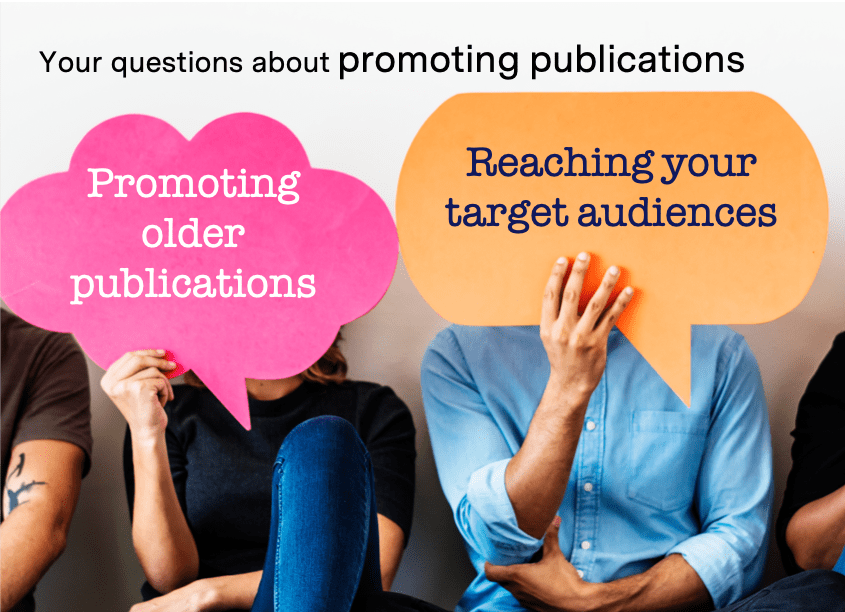This week, our blog posts are focusing on answering some of the questions that have come up during our recent webinars. We started with questions about tracking the impact of different types of research, and about how you can create impact in specific fields, or when you don’t have much budget. Then we looked at how you can make your article more discoverable in search engines. Today we’re answering your questions from our session about increasing the readership and impact of your publications.

Should I only promote my latest research? What about older publications?
There’s no rule! There could be many valid reasons why you would bring one of your older publications back to people’s attention. It could be relevant to an emerging news story and you think people would find it useful to catch up. It could be in complete opposition to a new publication and you would like to open a debate. It could be that an old paper you wrote has turned out to be really relevant to how your field has evolved, or that you once wrote a book chapter that you’d now like to set in a new context. It may be that you preparing an overview of a body of work that has taken several years, and want to summarize and re-share each relevant publication. You might be reaching the end of a period of follow-on grants and want to draw together an entire project and all its publications with an overarching explanation of your research arc.
Once I’ve created a “story” around my research, how can I get this in front of my target audience?
I know many researchers feel awkward about promoting themselves and their research, but there are so many ways to do this that aren’t flat-out hubristic – I wrote a post recently with some suggestions including putting a link in your email signature, on your business card and on your professional profiles; sending a dedicated email to people who took part in the project, or to the funders, colleagues at your institution or elsewhere, or people who have shown an interest previously; and asking your co-authors to do all of the above as well. Don’t forget that Kudos helps you create trackable links so you can see which of these kinds of activities have been most successful in drawing people in to your research.
As well as these quick and simple suggestions, there is a much wider range of ways you can connect with your target audience and make sure that the people who could benefit from your research are able to find it. You can post on social media (we have also shared tips previously on how to get started and build up a network on social media). You could organize a local event – or participate in a science fair, patients’ health day, or other kinds of workshops or consultation with the audiences you want to reach. Get in touch with the press and comms team at your institution (if you have one) – ask them for advice about how to reach more people, and put yourself forward for media interviews in your field.
Thank you to all those who have attended our recent webinars, and for the great questions! You can view slides / recordings or sign up for our future webinars 
At Kudos we have spent 10 years helping researchers develop and broaden impact through better research communication. Get started now – you can register for free and then pick the tools and services you need.

![[AD] Tools and services to help develop your research impact – join free and get started today](https://no-cache.hubspot.com/cta/default/5642616/8361fdcf-9cea-4cbd-a62a-465612a6bb22.png)
